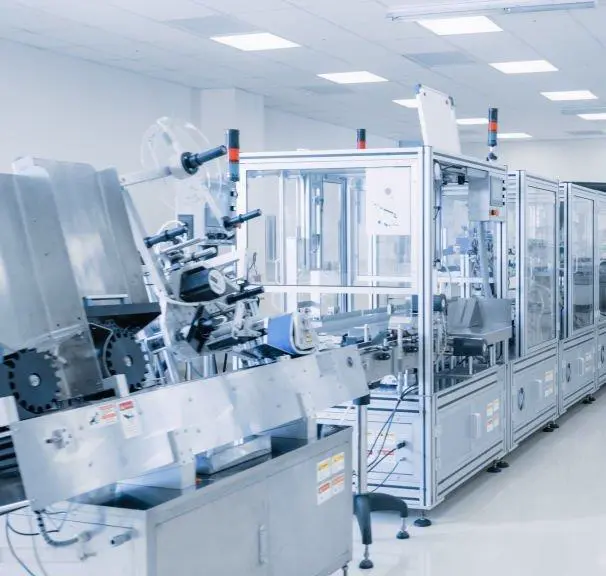What is SMT Machine Operator?
An SMT line operator is a professional responsible for the operation and maintenance of SMT production equipment. Surface Mount Technology (SMT) is an efficient and precise manufacturing method that mounts electronic components directly onto the surface of circuit boards, widely used in computers, communication devices, consumer electronics, and more. The primary responsibilities of an SMT Machine Operator include:
smt machine operator job description
- Operating equipment on the SMT production line, such as pick and place machines, printers, and reflow soldering ovens.
- Ensuring the normal operation of equipment, performing daily maintenance, and troubleshooting simple issues.
- Loading materials, changing materials, and managing inventory according to production plans and process requirements.
- Monitoring the production process to ensure product quality meets standards.
- Recording production data and filling out relevant reports.

How to Become an SMT Machine Operator
Educational Background
- Basic Knowledge: A diploma from a technical school or above, especially in electronics, mechanics, automation, or related fields. Understanding basic electronic components like resistors, capacitors, and transistors. Mastery of basic circuit principles and electronic technology.
- Theoretical Learning: Attend SMT-related training courses to learn about the working principles of SMT equipment, production processes, quality control methods, etc. Familiarize yourself with solder paste characteristics, pick and place machine operations, and printing process design.
Skills Training
- Participate in Training Courses: Enroll in SMT operator qualification training classes, usually provided by professional training institutions or internal company training. For example, in the U.S., SMT operator training is offered by IPC (Institute for Printed Circuits).
- Practical Operation: Conduct practical operation exercises in training to familiarize yourself with SMT production equipment operations and techniques. Master starting, running, and stopping equipment.
- Equipment Maintenance: Learn daily maintenance and simple troubleshooting methods for SMT equipment to ensure normal operation. Understand basic maintenance skills like cleaning, lubrication, and replacing wear parts.
Work Experience
- Internship Opportunities: Seek internships in SMT companies to gain practical experience through actual operations and participate in real production projects to understand production processes and equipment operations.
- Entry-Level Positions: Start as an operator or material handler on the SMT production line to gradually become familiar with the entire production process. Continuously learn and accumulate knowledge and skill enhancements during work.
- Continued Learning: Keep learning and accumulating knowledge to enhance your operational skills and process knowledge while staying updated with industry trends and the latest SMT technologies and equipment operations.
Professional Certification
- Obtain Qualification Certificates: Participate in SMT operator qualification training and pass the exam to obtain a certification. This not only increases your employment competitiveness but also provides companies with a basis of trust.
- Continuous Certification: Regularly participate in continuing education and certification training in the industry to keep your professional knowledge and skills up to date. IPC offers periodic continuing education courses to help operators refresh their knowledge and skills.
Personal Qualities
- Responsibility: Work diligently and responsibly, strictly following operating procedures to ensure stability in the production process and product quality.
- Team Cooperation: Possess good teamwork spirit and can effectively collaborate with colleagues on the production line.
- Quality Awareness: Have a strong sense of quality, capable of monitoring production quality and promptly identifying and resolving issues.
- Problem-Solving Skills: Analyze equipment faults or process problems calmly and take effective measures to solve them.
- Adaptability: Able to adapt to different working environments and types of equipment, flexibly responding to various changes in production.
Career Development
- Promotion Path: Gradually advance from operator to technician, assistant engineer, engineer, and other higher-level positions, continuously elevating your professional level. For example, in the U.S., you can advance from an SMT operator to SMT technician, then to SMT engineer or production supervisor.
- Industry Networking: Attend technical exchanges and exhibitions to learn about the latest technologies and industry trends, such as IPC APEX Expo in the U.S., Productronica in Europe, and NEPCON in Southeast Asia, to network with industry peers.
Conclusion
Becoming an SMT Machine Operator requires a systematic educational background, professional skills training, practical work experience, and good personal qualities. By following the steps and suggestions above, you can gradually become a qualified SMT operator in regions like Europe, North America, and Southeast Asia, continuously advancing in your career. We hope this guide helps you!
tag:what is a surface mount technician operator, surface mount operator, smt operators , smt technician
